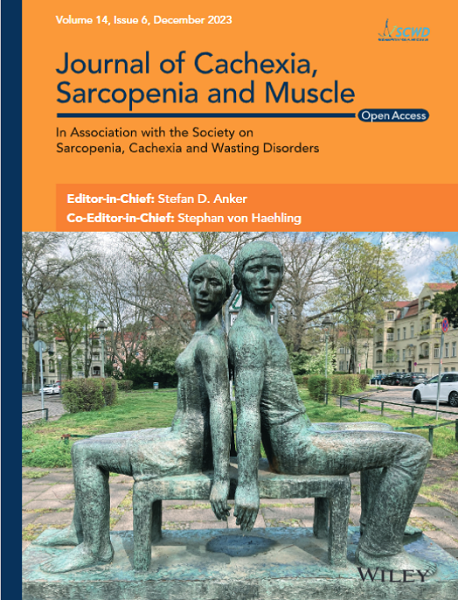Aptamer-Conjugated Exosomes Ameliorate Diabetes-Induced Muscle Atrophy by Enhancing SIRT1/FoxO1/3a-Mediated Mitochondrial Function
Abstract
Background
Muscle atrophy is associated with Type 2 diabetes mellitus, which reduces the quality of life and lacks effective treatment strategies. Previously, it was determined that human umbilical cord mesenchymal stromal cell (hucMSC)–derived exosomes (EXOs) ameliorate diabetes-induced muscle atrophy. However, the systemic application of EXOs is less selective for diseased tissues, which reduces their efficacy and safety associated with their nonspecific biological distribution in vivo. Therefore, improving exosomal targeting is imperative. In this study, a skeletal muscle–specific aptamer (Apt) was used to explore the effects of Apt-functionalized EXOs derived from hucMSCs in diabetes-associated muscle atrophy and its specific mechanisms.
Methods
Diabetic db/db mice and C2C12 myotubes were used to explore the effects of MSC-EXOs or Apt-EXOs in alleviating muscle atrophy. Grip strength, muscle weight and muscle fibre cross-sectional area (CSA) were used to evaluate skeletal muscle strength and muscle mass. Western blot analysis of muscle atrophy signalling, including MuRF1 and Atrogin 1 and the mitochondrial complex and Seahorse analysis were performed to investigate the underlying mechanisms of MSC-EXOs or Apt-EXOs on muscle atrophy.
Results
MSC-EXOs increased grip strength (p = 0.0002) and muscle mass (p = 0.0044 for tibialis anterior (TA) muscle, p = 0.002 for soleus (SO) muscle) in db/db mice. It also increased the CSA of muscle fibres (p = 0.0011 for all fibres, p = 0.0036 for slow muscle fibres and p = 0.0089 for fast muscle fibres) and the percentage of slow-to-fast muscle fibres (p = 0.0109). However, Atrogin 1 (p = 0.0455) and MuRF1 expression (p = 0.0168) was reduced. MSC-EXOs activated SIRT1/FoxO1/3a signalling and enhanced mitochondrial function in db/db mice and C2C12 myotubes. SIRT1 knockdown decreased the beneficial antiatrophic effects of MSC-EXOs. Additionally, Apt conjugation increased the effect of MSC-EXOs on muscle atrophy and myofiber-type transition (p = 0.0133 for grip strength, p = 0.0124 for TA muscle weight, p = 0.0008 for SO muscle weight, p < 0.0001 for CSA of all muscle fibres, p = 0.0198 for CSA of slow muscle fibres, p = 0.0213 for CSA of fast muscle fibres, p = 0.011 for percentage of slow–fast muscle fibres, p = 0.0141 for Atrogin 1 expression and p = 0.005 for MuRF1 expression).
Conclusions
The results suggest that hucMSC-derived exosomes ameliorate diabetes-associated muscle atrophy by enhancing SIRT1/FoxO1/3a-mediated mitochondrial function and that Apt conjugation strengthens the effects of MSC-EXOs on muscle atrophy. These findings demonstrate the therapeutic potential of muscle-targeted MSC-EXOs for the treatment of muscle atrophy.


 求助内容:
求助内容: 应助结果提醒方式:
应助结果提醒方式:


